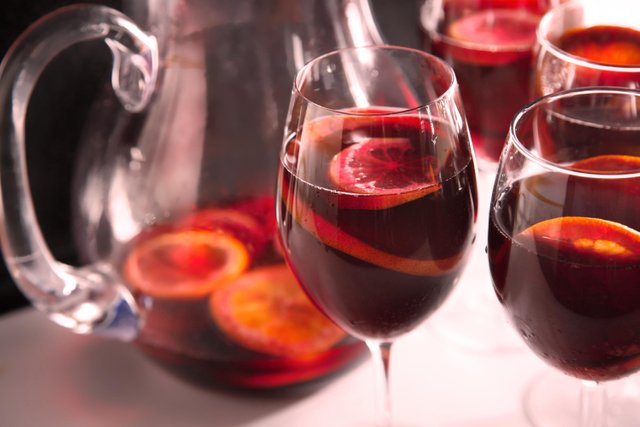History Of Red Sangria Wine

The Spanish wine punch has veered off so distant from its straightforward starting points it's almost unrecognizable. For quite a long time, sangrias have been gracing red and white excursion fabrics and eateries with open air seating. Sangria appears to be interminably versatile, enigmatically Spanish, and unmoored from any set customs. In any case, customary sangria returns — route back — as wine blended in with anything that is close by.
Early Greeks and Romans blended their wine in with sugar, flavors, and whatever was close by (sound natural?). It was designated "hippocras," and it was once in a while warmed like reflected on wine. Hippocras is likely the normal precursor of both sangria and reflected on wine, and was smashed wherever in light of the fact that water was microbes filled and dangerous to drink. A bit of liquor made the fluid drinkable, and blending the watered-down wine gave it enhance. Individuals who lived in advanced Spain were accomplishing something comparative with grapevines planted by the Phoenicians around 1,100 B.C., and afterward with vines planted by the Romans after.
In any case, during the 800s, the Spanish wine business, and by expansion the Spanish sangria business, vacillated. Islamic Moors vanquished the promontory in 711 A.D. Sangria didn't return until the Moors' standard finished in 1495, and with the arrival of wine there was the arrival of sangria.
Minor departure from house sangria — which means blood in Spanish, in reference to the red wine utilized — administered in Spain. Customarily, it's been made with Spanish Tempranillo and other wine from Rioja with included citrus natural product. Be that as it may, and, after its all said and done, no Sangria was made the equivalent.
During the 1600s and 1700s, a style of sangria was made in England and France utilizing customarily French grapes. There was likewise white sangria, shimmering sangria, and sangria made with peaches, which was called zurra. The beverage in the entirety of its structures had flashes of ubiquity in the U.S. in Spanish cafés and certain city niches.
The present furor for sangria in the U.S. goes back to the 1966 World's Fair in New York City. Spain's supported structure highlighted the beverage, and Americans have been hungry for sangria from that point forward.
Today, under European law, all sangria must be made in Spain or Portugal and have under 12 percent liquor by volume. The best sangria, be that as it may, is hand crafted. Look at VinePair's sangria manual for locate your next most loved summer drink.
Welcome to Steemit @foodymoody :)
Downvoting a post can decrease pending rewards and make it less visible. Common reasons:
Submit
Welcome to steemit @foodymoody.
Welcome the new steemians. Have a great day!
Downvoting a post can decrease pending rewards and make it less visible. Common reasons:
Submit